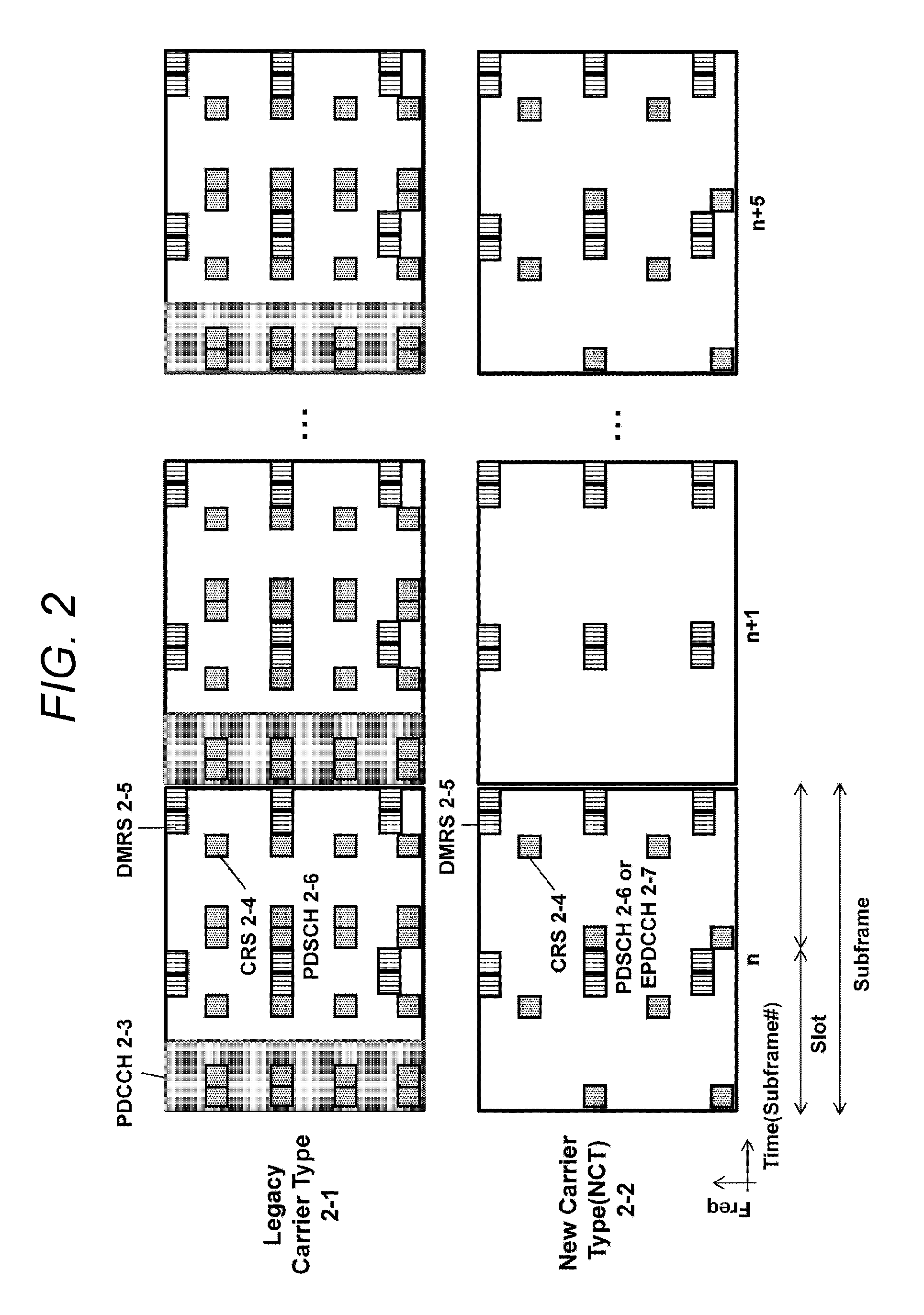Wireless communication method and wireless communication system
- Summary
- Abstract
- Description
- Claims
- Application Information
AI Technical Summary
Benefits of technology
Problems solved by technology
Method used
Image
Examples
first embodiment
1. First Embodiment
[0053]An object of a first embodiment is to distribute transmission of a PUCCH to a plurality of cells, that is, a plurality of UL CCs.
[0054]FIG. 4 is a schematic diagram of the first embodiment of the invention. Similar to FIG. 3, a lagacy carrier is used in a macro cell 4-2 and an NCT is used in a CC different from the macro cell in a small cell 4-4.
[0055]In FIG. 4, a terminal 4-5 is positioned at only the macro cell 4-2 and performs communication with a macro base station 4-1 using the lagacy carrier (F1DL and F1UL). That is, a PDCCH or an EPDCCH of the F1DL is transmitted from the macro base station 4-1 to the terminal 4-5 and a PDSCH for the terminal 4-5 is scheduled. In addition, in the F1DL, the PDSCH is transmitted from the macro base station 4-1 to the terminal 4-5. Likewise, a PUSCH of the terminal 4-5 is scheduled using the PDCCH or the EPDCCH of the F1DL. In addition, in the F1UL, the PUSCH is transmitted from the terminal 4-5 to the macro base station...
second embodiment
2. Second Embodiment
[0067]An object of a second embodiment is to distribute transmission of a PUCCH to a space, that is, a different cell direction of the same CC.
[0068]In the LTE standard, a PUCCH for each cell is distinguished by a PCI. Specifically, if the PCI is different, initial values of a signal sequence (base sequence) to be a base of a signal sequence of the PUCCH and a random sequence to determine a pattern of cyclic shift are different. Meanwhile, PUCCHs between terminals in the same cell ID are distinguished by PUCCH resources. Specifically, if the PUCCH resources are different, a frequency resource (that is, a number of a PRB) used for the PUCCH, a cyclic shift amount, and an orthogonal sequence multiplied with a time domain are different. The details thereof are disclosed in NPL 3.
[0069]When PCI used in PUCCHs transmitted by different terminals is different, interference of the PUCCHs of the terminals is randomized even though the terminals use the same PUCCH resource...
third embodiment
3. Third Embodiment
[0078]In a third embodiment, an object of a third embodiment is to distribute transmission of a PUCCH to a frequency carrier direction and a space direction.
[0079]In the second embodiment, as illustrated in FIG. 7, only the transmission destination of the PUCCH is changed (that is, the PCI to generate the signal sequence of the PUCCH is changed to the VCI of the different value). For this reason, the PUCCH resources need to be distinguished in the macro cell and the small cell to prevent the PUCCH of the terminal transmitting the PUCCH to the macro cell from causing large interference in the small cell and frequency use efficiency of the uplink in the macro cell may not be sufficiently improved. In addition, in the first embodiment, as illustrated in FIG. 4, only the CC transmitting the PUCCH is changed. For this reason, even though the F2UL is not used for the communication of the data (PUSCH) of the uplink in the macro cell, the macro base station needs to have ...
PUM
 Login to View More
Login to View More Abstract
Description
Claims
Application Information
 Login to View More
Login to View More - R&D
- Intellectual Property
- Life Sciences
- Materials
- Tech Scout
- Unparalleled Data Quality
- Higher Quality Content
- 60% Fewer Hallucinations
Browse by: Latest US Patents, China's latest patents, Technical Efficacy Thesaurus, Application Domain, Technology Topic, Popular Technical Reports.
© 2025 PatSnap. All rights reserved.Legal|Privacy policy|Modern Slavery Act Transparency Statement|Sitemap|About US| Contact US: help@patsnap.com



